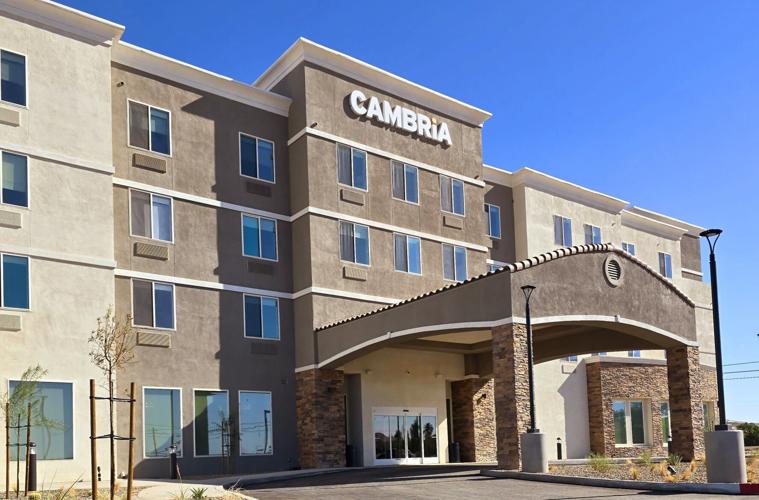7/21/16 - SDBJ - Developers Feel Pressure to Deliver at Seaport Village Site
PORT: Many Stakeholders To Weigh In On $1.2B Plan
San Diego — Even after more than three decades spent managing and developing major projects in San Diego and elsewhere, Yehudi Gaffen says he’s rarely taken on something with the size and multi-component scope of what his development team is now proposing for the downtown waterfront.
Gaffen is a partner and public point man for locally based Protea Waterfront Properties, which is in talks with the Unified Port of San Diego on a $1.2 billion proposal to build elements including new hotels, retail marketplaces, an aquarium, a spiral observation tower and a virtual-reality cultural attraction from an arm of the Smithsonian Institution.
What adds more pressure is that the 70-acre project, if ultimately approved by port officials this October, is slated to eventually replace Seaport Village, the aging but still beloved retail center that has been a Central Embarcadero mainstay since 1980.
“It’s a lot of pressure, because it’s a very iconic location and you want to get it right,” Gaffen said. “We hope we have helped to address some of those concerns by reaching out to the stakeholders in advance.”
Gaffen said he and his partners – longtime local developers Jeffrey Essakow and Jeff Jacobs – met with numerous interested parties over the course of several weeks before submitting their 300-page proposal to the port district earlier this year. Those stakeholders included current Seaport Village tenants, the fishing and aquaculture community, and downtown business owners and residents.
‘Public Living Room’
Education will also be a component of the project. Developers are in talks with a local charter school to set up a campus on the site, and both the University of San Diego and the Scripps Institution of Oceanography have expressed preliminary interest in setting up education-related facilities tied to boosting the region’s long-discussed “Blue Economy,” which spans several water-oriented sectors.
Gaffen said developers have taken steps to address numerous priorities emphasized by port officials when the Central Embarcadero project was put out for proposals. He said elements are designed to fit together as a “public living room” for locals and tourists, boosting viewing corridors along the waterfront while better integrating the Embarcadero with nearby downtown streets than is currently the case.
Known more commonly by friends and colleagues as “Gaf,” Gaffen’s day job also includes serving as CEO of Gafcon Inc., the Sorrento Valley-headquartered construction management and consulting firm that he founded in 1987 with his wife, Pam. The company has played a role in numerous large projects at universities, retail centers, hotels and office parks, locally and globally.
photo
Renderings courtesy of Protea Waterfront Development
Gaffen said he is well aware that Protea’s waterfront plans ultimately must pass muster not only with port officials and local residents, but also with the California Coastal Commission. The coastal panel has long been pushing for new waterfront projects to include generous access to public viewing areas, green spaces and affordable hotel rooms.
Many longtime downtown residents and business owners will not want big new waterfront elements blocking their views of the bay. And for the past decade, San Diego’s water-adjacent development proposals have rarely gone without a legal challenge based on environmental or other factors, often dragging on for months or years.
Provided that all the hurdles can be surmounted, Gaffen anticipates that the Protea project would break ground no sooner than 2020. It would be built out in multiple phases going from north to south with the final element, likely the aquarium, being completed around 2024.
Top of 6 Proposals
By a 6-1 vote, port district commissioners recently chose the Protea plan from among six submitted by various development teams, most of them also including prominent San Diego developers with distinguished track records. Addressing an issue raised by commissioners including Marshall Merrifield, who cast the dissenting vote, port officials have reserved the right to revisit the other proposals if the Protea plan is found to be unworkable.
Port officials will be discussing with Protea elements including timetables, feasibility of cost projections, and how the district can improve expected revenue being generated by prime waterfront land; the district is looking to generate far more than the approximately $3 million that it currently takes in annually from rent and related revenue from Seaport Village.
Port officials are not discussing the project while talks are ongoing. At their recent meeting, port commissioners praised the Protea plan for addressing several of the priorities that the district had expressed when calling for proposals, and they also credited developers for meeting with community stakeholders.
These are among key elements of Protea’s proposal, all subject to pending negotiations:
Hotels – Gaffen said developers have signed letters of interest from operators of three hotels that would total around 1,000 rooms. The largest is a luxury property that would be the first U.S. West Coast location for Virgin Hotels, a subsidiary of the U.K. company led by billionaire Sir Richard Branson. The other hotels are a mid-priced “cabin style” property from Yotel; and a low-priced, hostel-style offering from developer Freehand.
Retail – The proposal calls for retail spaces including a public market, along the lines of Pike Place Market in Seattle. It could be a year-round version of weekly fish markets recently held locally at Tuna Harbor. In another portion of the development, talks are in progress with various retailers and operators of a potential luxury movie theater.
Smithsonian attraction – Smithsonian Media would establish an education and culture-related exhibit space, making use of virtual reality and other immersive technologies.
Observation tower – A 480-foot tower called The Spire would be revised from a prior proposal put forward by developer ThrillCorp Inc. last year for the North Embarcadero. This one would feature several slow-moving gondolas that might also make use of virtual reality technologies. “You could look out and see what San Diego Bay looked like 50 or 100 years ago,” said Gaffen, adding that lighting for the tower and other project elements could be synchronized for special occasions with the lights on the nearby San Diego-Coronado Bridge.
Aquarium – Odysea San Diego would be a multi-level, 150,000-square-foot, 1.5-million-gallon aquarium with a “deep-sea diving experience,” a “4-D” movie theater and more than 25,000 fish. Designed by noted global architecture firm Bjarke Ingels Group, it would extend into a public park, where visitors could view education-related programs without paying the $30 ticket price.
Parks and public space - More than 30 acres have been dedicated to park and open space, to be used for public access, gathering areas, art exhibitions, concerts and other community events.

